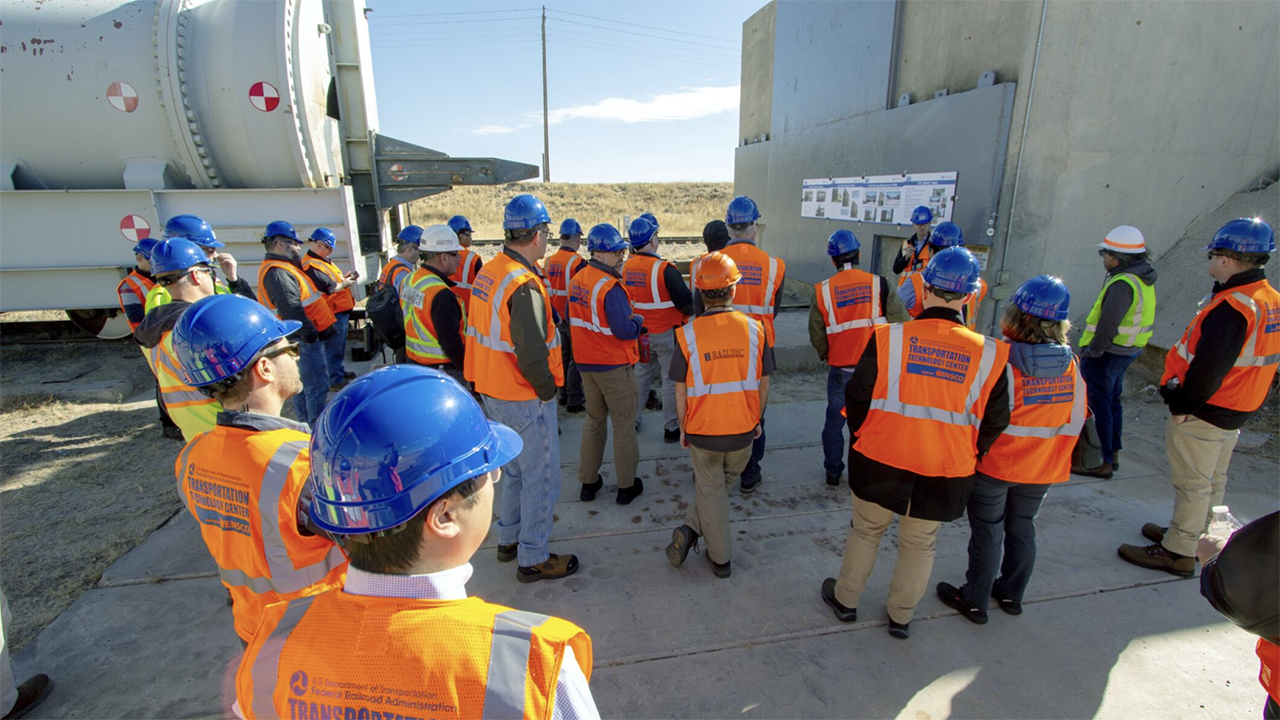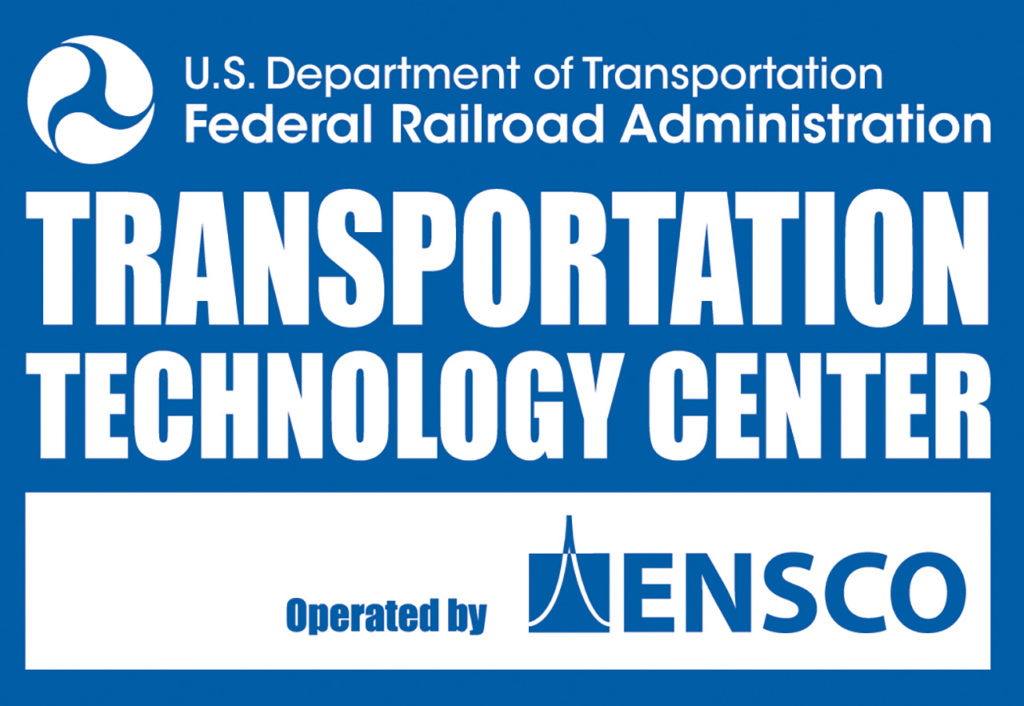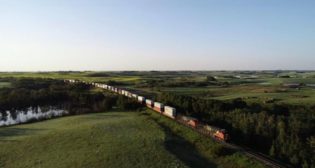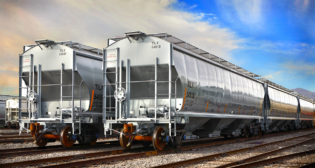
Up Close at the Impact Wall
Written by Matthew Dick, Chief of Strategy & Development, and Przemyslaw Rakoczy, Ph.D., Senior Rail Research Engineer, ENSCO, Inc
(TTC Operated by ENSCO Photograph)
TTC OPERATED BY ENSCO, RAILWAY AGE FEBRUARY 2024 ISSUE: When visitors enter the Transportation Technology Center (TTC), they travel over a small overpass just prior to arriving at the entrance gate. Despite thousands of people having made this journey over the years, few had the chance to stand close to one of the TTC’s testing capabilities, located near the entry into the TTC. This changed during the first annual TTC Conference and Tour Nov. 7-8, 2023. Attendees were granted a unique opportunity to witness the TTC Impact Wall and Ram Car up close and learn about its applications and future use.
Visit to the Impact Wall
TTC tour participants explored various testing sites, many of which had never been seen by the public before, shuttled on tour buses. At one of the sites, attendees exited the bus to see one of the largest test structures on the property, a large vertical impact wall constructed of concrete and steel. Leading up to the wall is typical railway track. But parked on the track is a one-of-a-kind railcar previously unseen by many of the attendees. It’s a flat car equipped with a heavy mass with a protruding steel structure. Known as the Ram Car, it is parked pointing directly at the Impact Wall like an arrow toward a target.
Przemyslaw Rakoczy, a TTC employee and rail vehicle impact subject-matter expert, greeted attendees to discuss the Impact Wall and Ram Car. Dr. Rakoczy explained that the Impact Wall, constructed in 1999, aimed to ensure railway crashworthiness safety for Federal Railroad Administration-led initiatives. Designed to withstand a three-million-pound impact at 65 inches above the top of the rail, the Impact Wall and Ram Car support high-speed instrumentation including strain gauges, displacement potentiometers, pressure gauges, accelerometers and high-speed cameras for impact tests.
Dr. Rakoczy highlighted the common pairing of full-scale impact tests with Finite Element Analysis (FEA) simulations. FEA simulation packages such as LS-DYNA are commonly used to replicate impact test scenarios, but they need to be validated with physical test results from testing at the TTC. Once the FEA model is validated, it enables more simulations to be run to produce important insights while reducing the number of physical tests that need to be conducted. He discussed specific past applications and potential future uses for the Impact Wall and Ram Car.
Tank Car Impact Testing
Dr. Rakoczy delved into the history of the Impact Wall being employed for tank car puncture testing. Tank car crashworthiness, crucial for withstanding punctures from objects like derailed railcars’ couplers or broken rails, was replicated by the Ram Car in a controlled and repeatable manner. With the Ram Car guided by the track, the precise location of the impact and impact speed can be achieved. Testing has been done by impacting the side of the tank car shell and the tank car shell head (end).
As an example, the TTC Impact Wall supported the testing required for the creation of the DOT-117 tank car specification, which focused on increasing tank car crashworthiness and puncture resistance for flammable liquids such as crude oil. The DOT-117 specifications are defined in the Pipeline and Hazard Materials Safety Administration (PHMSA) Title 49, Code of Federal Regulations Part 179.200, General Specifications Applicable to Non-Pressure Tank Car Tanks (Class DOT–111, DOT–117).
Passenger Car Testing
The Impact Wall has played a crucial role in advancing crashworthiness for passenger vehicles. Notably, the first tests conducted with the Impact Wall focused on passenger car crashworthiness shortly after its construction. One significant contribution has been in aiding in the testing of Crash Energy Management (CEM).
In scenarios where a passenger car collides with another train, the conventional impact energy absorption by the first car often leads to rapid deceleration and catastrophic structural collapse, causing serious injuries and fatalities. CEM addresses this by incorporating an intentional crush zone at the end of each vehicle, deforming in a controlled manner during impact. This strategic design allows for the “spreading” of impact energy absorption throughout the whole consist, resulting in smoother deceleration and reduced risks to passengers, minimizing damage throughout the vehicle. Through the testing conducted at the Impact Wall, FRA Title 49, Code of Federal Regulations Part 238.403, Crash Energy Management regulation, was able to be defined and is currently implemented.
Fuel Tank Testing
Beyond freight and passenger cars, the Impact Wall was utilized for testing vehicle components such as diesel fuel tanks. Standards defining fuel tank crashworthiness, including FRA Title 49, CFR Part 238.223, and the Association of American Railroads Manual of Standards and Recommended Practices, S-5506, were incorporated into Impact Wall testing scenarios. These real-life scenarios include a locomotive derailing and having the fuel tank strike the head of the rail of the track, a side impact from a semi-truck and a penetration from a broken rail. Some of these scenarios were replicated with the Impact Wall and variations of the Ram Cart, a smaller version of the Ram Car.
Future Applications
As the railway industry evolves, the Impact Wall continues to play a supporting role. In the August 2023 issue of Railway Age, the TTC Operated By ENSCO article detailed future needs related to alternative energy use for the reduction of greenhouse gases. Testing crashworthiness designs and specifications for alternative energy methods such as Hydrogen, Renewable Natural Gas (RNG), and Battery Energy Storage Systems (BESS) remains critical for meeting safety expectations.




